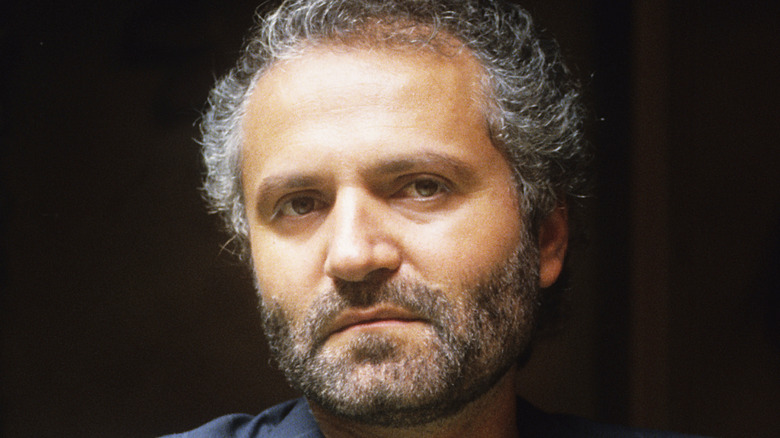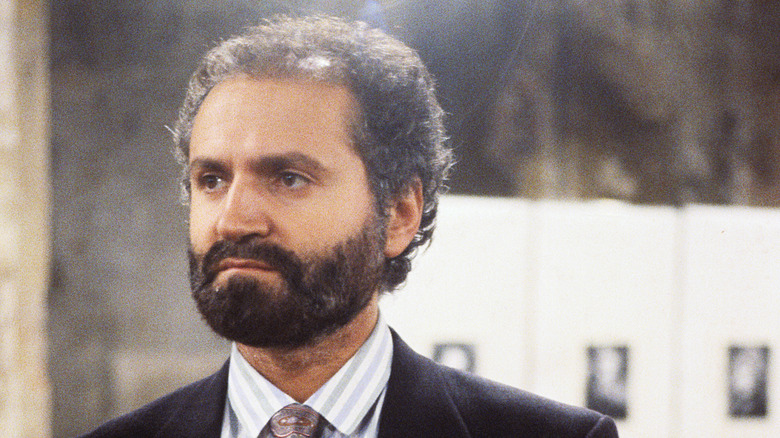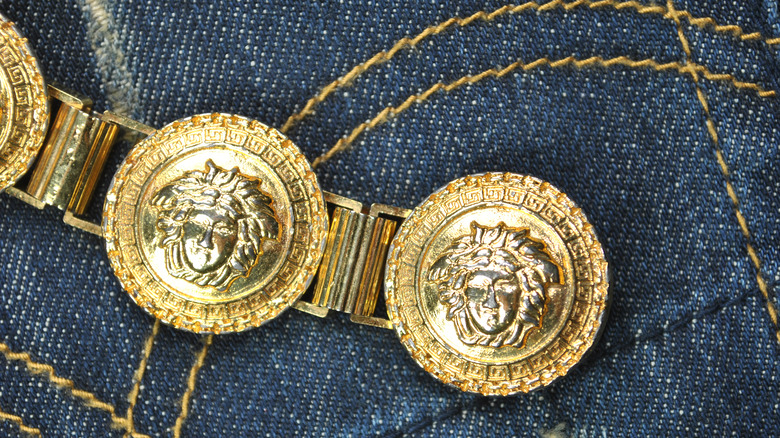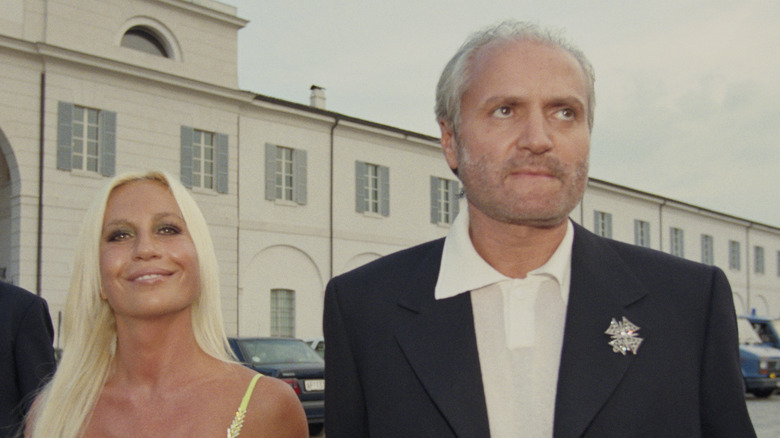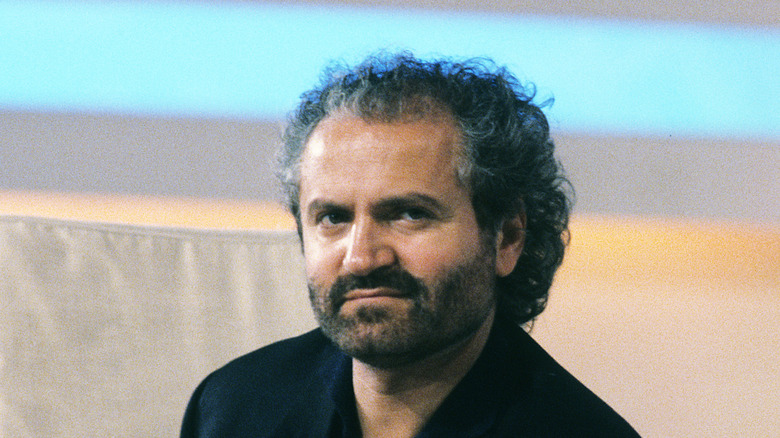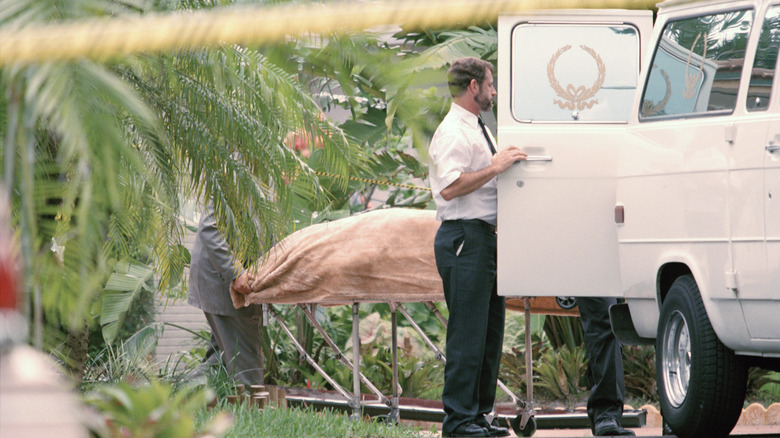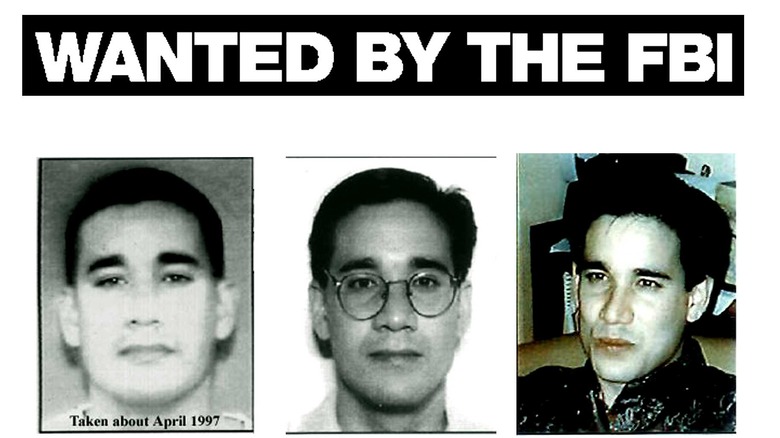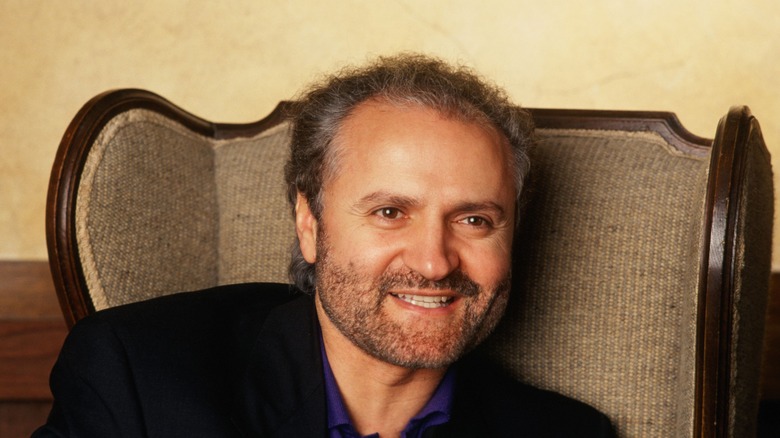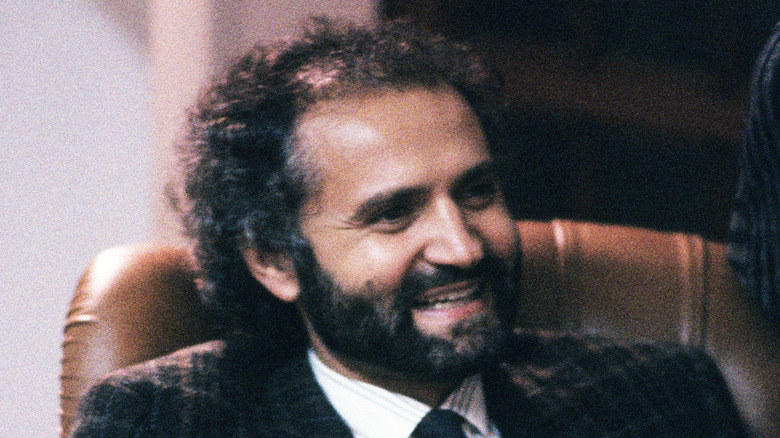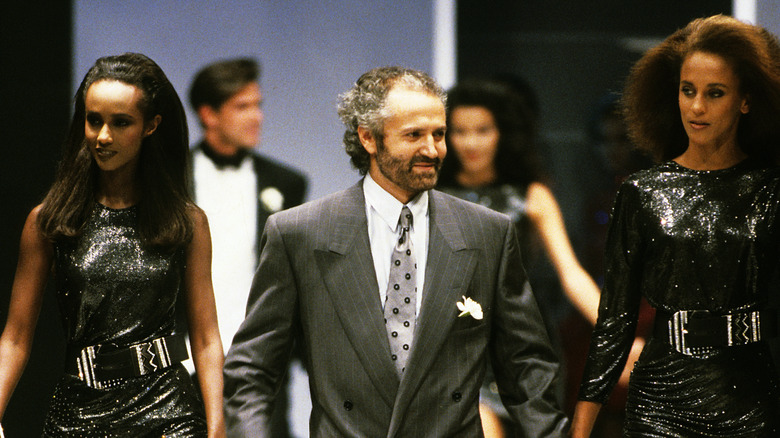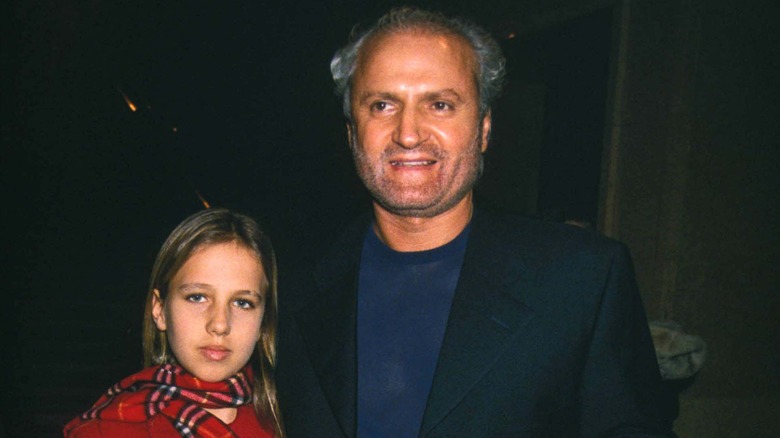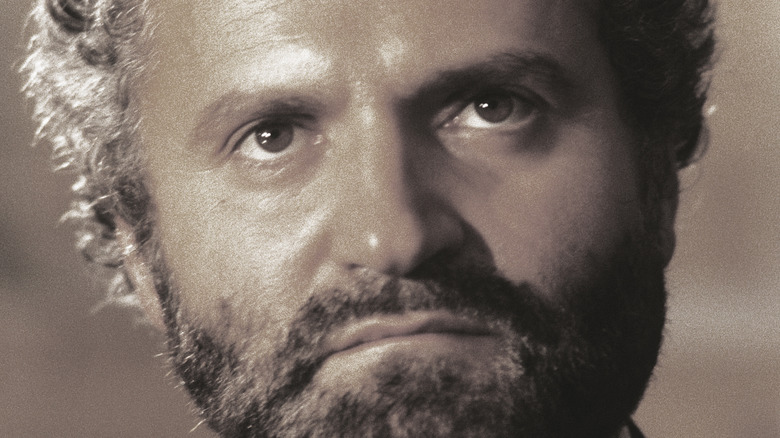Gianni Versace: The Tragic Real-Life Story
The Versace name conjures up images of gilded glamour, of drama and intrigue, of Greek and Italian imagery. The man behind the multibillion-dollar fashion house was, according to some reports, not as flashy as his designs. From his childhood spent playing among run-down architecture to his adulthood spent working hard and going to bed early, Gianni Versace seemed to be a man with a simple passion for fashion and family. But Versace's focus didn't stop tragedy from infiltrating the five short decades of his life.
Much of the drama surrounding Gianni Versace happened by proxy. His clothes, which made the old new and dazzling again, attracted an exuberant crowd. His sister, business partner, and muse, Donatella Versace, was a raucous party girl while he was alive. Through his work in fashion, Gianni grew close to flamboyant celebrities like Elton John and Prince. Another dear friend, Princess Diana, suffered a similarly tragic fate to Gianni just a month and a half after his own death. And Gianni's untimely death, like his trailblazing designs, sent shock waves through the world that are still reverberating decades later. Here's the stirring story of Gianni Versace's life and death.
Gianni Versace was born in a poor, run-down town in Italy
On December 2, 1946, Gianna Versace was born in Reggio di Calabria, an industrial city on the "toe" of southern Italy, per Encyclopedia.com. His father, Antonio, sold appliances, while his mother, Francesca, made dresses and owned a clothing store. The region was one of the poorest in Italy at the time, according to Britannica. Still, the setting laid the foundations for the luxurious Versace fashion house. Versace watched as his mother cut fabric and sewed patterns and admired the fashions worn by the women who visited her shop. In this chic environment, he knew early in life that he wanted to be a fashion designer.
Reggio di Calabria was also home to the inspiration for the iconic Versace logo. "When you are born in a place such as Calabria and there is beauty all around a Roman bath, a Greek remain, you cannot help but be influenced by the classical past,” Versace once said (via The New York Times). As a child, he would play among the town's Greek and Roman ruins. According to CR Fashion Book, Versace saw the emblem of Medusa — the Greek gorgon with snakes for hair who turned all who beheld her into stone — among the ruins. The image haunted him, and in 1992, he translated it into the Versace logo, a fitting symbol for the label's striking glamour.
Gianni Versace's sister, Tina, died at age 12
Gianni Versace's older brother, Santo, was born in 1944, and Gianni himself came along two years later. Before Santo and Gianni, Antonio and Francesca Versace had welcomed a daughter named Tina. When Tina was 12 years old, the family visited a local carnival, where she fell and skinned her knee, per The New Yorker. The wound led to a tetanus infection, and the doctor gave her the wrong medication to treat it. Tina died within 24 hours. Gianni was 6 years old at the time. "Sudden death is frequent in my family," Donatella, who was born three years after Tina's death, told The New Yorker.
Donatella later told Harper's Bazaar that their mother "never recovered" from the tragedy, adding, "I felt when I was little, 'Oh, I'm going to have to fill someone else's place.' This was why I was born as a baby, because my parents couldn't get over the loss of my sister, who I never met. See, I'm telling the truth finally ... It gave me a little bit of insecurity" (via Refinery 29).
Gianni, likely scarred by the tragedy, paid special attention to his little sister thereafter. "Gianni always treated me like an adult, never my age," Donatella told The New Yorker. "I loved that, of course. ... I was so young. We were lying about my age, telling everybody I was older. My mother, she wanted to kill him."
Some people have criticized Versace designs as flashy and trashy
Gianni Versace entered the fashion world at a pivotal moment. According to The New York Times, he began his career as a designer in 1972, when the industry was stuffy and out-of-touch with the modern majority. Versace infused his designs with classical elements inspired by the Greek architecture of his hometown but presented them in ways that made them feel fresh, modern, and exciting. "I think it's the responsibility of a designer to try to break rules and barriers,” he once said (via The New York Times). "I'm a little like Marco Polo, going around and mixing cultures.”
When Versace was entering the design world, critics found his designs flashy, trashy, and vulgar. The label's sexually charged advertisements were criticized by conservative media outlets for their nudity. Versace was one of the first labels to blend the worlds of fashion and celebrity, featuring stars like Elton John, Madonna, and Prince in its ad campaigns, which some fashion snobs scowled at. These criticisms were caricatured when Versace designs were admired by the stripper characters in the critically panned 1995 movie "Showgirls." "Armani dresses the wife and Versace dresses the mistress," Vogue editor Anna Wintour once wrote. Still, Donatella Versace took this as a compliment, telling SSENSE, "Mistresses have much more fun than wives do."
Gianni was disappointed by his sister Donatella's drug use
Gianni Versace's younger sister, Donatella, became addicted to cocaine in 1987, per The Guardian. Naturally, this was a worry for Gianni, who lived a relatively tame lifestyle despite the wild, partying image of his fashion house. According to New York magazine, Gianni went to bed early, woke up early, and shunned all illicit substances, including alcohol.
Gianni didn't know about Donatella's drug use at first, but it soon became obvious due to her extremely public image. He was reportedly disappointed, but cocaine continued to be a permanent fixture backstage at his runway shows, and at the after-parties once he went to bed.
Donatella stopped using drugs after Gianni's death but relapsed shortly thereafter. She overcame the 18-year addiction once and for all in rehab in 2005. "I made a lot of mistakes," Donatella told The Guardian in 2017. "Any addiction I have had, when I have ended it, I have done it just like that. I don't look back."
If you or anyone you know is struggling with addiction issues, help is available. Visit the Substance Abuse and Mental Health Services Administration website or contact SAMHSA's National Helpline at 1-800-662-HELP (4357).
Gianni Versace was diagnosed with a rare ear cancer
Gianni Versace's medical history has been the source of much speculation. Two of the closest people to him — his sister, Donatella, and his partner, Antonio D'Amico — told media outlets that Gianni was diagnosed with cancer before he died. In August 1999, Out magazine published a profile of the designer with quotes from D'Amico. The article stated that Gianni had received treatment for bone cancer in his cheek in 1996. "He was more tired because of the chemo, but he kept working," D'Amico told the magazine.
Two years earlier, The New York Times published an obituary for Gianni, which stated he had been diagnosed with "a rare cancer of the inner ear in 1993." Donatella echoed this in a 2006 interview with New York magazine. "Gianni was sure he was going to die," she said. "He was sick with cancer in his ear before he was murdered. The last two years of his life, Gianni was hiding, hiding up in his apartment in Via Gesú, because his ear was so big. It was impossible to do a surgery because of the position, because to do a surgery, part of his face was supposed to drop. ... But then it was declared cured six months before he was murdered."
Based on these reports, it seems that Gianni was diagnosed with ear cancer in 1993, which spread to the bones in his cheek over the few years that followed, culminating in him receiving successful chemotherapy treatment in 1996.
Gianni Versace was fatally shot outside his home
On the morning of July 15, 1997, Gianni Versace woke up in Casa Casuarina, his mansion in Miami Beach. According to Biography, Versace began the day at 8:30 with a routine stroll to his local newsstand, the News Cafe. He bought five magazines and then headed back to his mansion, which was less than a 10-minute walk away. As Versace began opening the gates, his partner, Antonio D'Amico, was drinking coffee on the veranda. But before Versace could enter the premises, a man appeared with a handgun and shot the designer point-blank, twice, in the back of his head.
"I felt as if my blood had turned to ice," D'Amico told the Observer (via Biography). "The house had stained glass windows so we couldn't see what had happened from inside, so we had to open the gate. I saw Gianni lying on the steps, with blood around him. At that point, everything went dark. I was pulled away, I didn't see any more."
Versace was pronounced dead by 9:15 that morning, at the age of 50.
The motive for Gianni Versace's murder remains mysterious
Following the murder of Gianni Versace, police investigators concluded that a 27-year-old man named Andrew Cunanan killed him single-handedly, per CNN. Cunanan was suspected of killing four other men. No motive has ever been established for the murders. One week after murdering Versace, Cunanan committed suicide on a nearby houseboat, which sank shortly thereafter.
Still, the media and the public have come up with countless theories about why Cunanan murdered Versace. According to Harper's Bazaar, Cunanan's first two victims had been his friend, Jeffrey Trail, and his ex-boyfriend, David Madson. Cunanan was reportedly romantically linked to both men, and some believe their rejection of him turned him bitter and resentful. Cunanan never received a psychological evaluation, but many believe he had undiagnosed mental health issues. Others theorize that Cunanan simply wanted his 15 minutes of fame by killing someone in the public eye.
"The real answer to that went down with the ship, so to speak, when Andrew Cunanan committed suicide," said Miami Beach Police Chief Richard Barreto when asked about a possible motive (via CNN).
Some people believe homophobia played a role in Versace's murder
At least three of Andrew Cunanan's murder victims were gay or believed to be gay. Some people have speculated that homosexuality and homophobia played some role in Cunanan's killing spree. Ryan Murphy, creator of the 2018 television series "The Assassination of Gianni Versace," explained that he called Versace's murder an "assassination" because "it was a political murder" (via the Associated Press). He also described Cunanan as a "person who targeted people specifically to shame them and to out them, and to have a form of payback for a life that he felt he could not live."
"The underlying subject is homophobia and how homophobia killed him," said star Edgar Ramirez of "The Assassination of Gianni Versace." His co-star, Ricky Martin, who played Versace's partner, Antonio D'Amico, echoed these sentiments in an interview with The Hollywood Reporter.
"Unfortunately, nowadays, we still deal with homophobia and I think it's not how he died, it's why we allowed it to happen," Martin said. "He was being brave enough to come out of the closet and to introduce his partner in public. ... Do you know how many lovers I had that I hid from the public that I did not allow anyone to see because I was afraid? Gianni Versace went through the same thing as well and for me, that was a lesson. You have to be strong, you have to be brave, you have to be yourself and you have to be proud of who you are and not be afraid."
If you or a loved one has experienced a hate crime, contact the VictimConnect Hotline by phone at 1-855-4-VICTIM or by chat for more information or assistance in locating services to help. If you or a loved one are in immediate danger, call 911.
Some people have alleged that Gianni Versace was HIV-positive
In 1999, two years after Gianni Versace's 1997 death, Vanity Fair writer Maureen Orth published the book "Vulgar Favors: Andrew Cunanan, Gianni Versace, and the Largest Failed Manhunt in U.S. History." In the book, Orth alleged that Versace was HIV-positive. She claimed that he was seen looking "weak and emaciated" between 1994 and 1995, and she quoted one of his Miami Beach neighbors as saying that Versace "could barely walk half a block and needed to be supported by Antonio [D'Amico] the whole time." Of course, this could be attributed to Versace's inner-ear cancer.
The lead Miami Beach detective on the murder investigation, Paul Scrimshaw, told Orth that he "was able to find out from autopsy results that [Versace] had tested positive for HIV." Orth later told The Hollywood Reporter that Scrimshaw had allegedly received this information from the medical examiner who conducted Versace's blood tests.
Versace's autopsy reports are not public to anyone outside of the Versace family, who vehemently deny Orth's claims. "This is an example of an unprincipled individual using rumor and innuendo to capitalize on the memory of Gianni Versace," a family spokesperson told People in 1999. Dr. Emma Lew, who performed the autopsy, also told Orth that Versace "had no natural disease that would have caused his death at that time."
When he died, Versace was at the height of success
By the mid-1990s, Gianni Versace and his fashion empire were better than ever. According to AnOther magazine, Versace had debuted his Autumn/Winter 1997 collection in Paris just nine days before he was murdered. The runway show was a huge success, featuring sparkling metallics and international supermodel Naomi Campbell front and center.
According to his obituary in The New York Times, Versace produced two couture collections, two menswear collections, two women's ready-to-wear collections, and a home-decorating collection each year. "You know I talk through my work, and I want to talk more,” he said of his prolific output. "At the beginning of my career, it was very hard to go up. Now, it's very hard to stay on top. You have to stay there, and I want to stay there so badly. I'm still standing.”
Versace's success only added an extra layer of poignancy to his murder. When he was murdered in the summer of 1997, he left behind a 25-year-old, $807 million business and 130 boutiques across the globe. According to Biography, Versace had been set to receive an honor for Citizen of the Year from the Italy-America Chamber of Commerce that November but did not live to accept the honor.
Gianni Versace never got to see his beloved nieces and nephews grow up
Although Gianni Versace never had children of his own, he was extremely close to the children of his younger sister and business partner, Donatella Versace. "I want to see my niece and nephew grow up, to see their children," Gianni once told The New Yorker (via The Irish Times). "I get crazy at the idea that a time will come when I won't see Daniel and Allegra anymore."
"My children were his children," Donatella told New York magazine in 2006. "He was always with Allegra. Since she was 9 years old only, she would listen to him, she was going to see museum, she knew all the museum in America, in France, in England, and Gianni loved art. She would sit with him and go through art books, and she knew the art of Picasso ... it was adorable. She was such an amazing, special little girl." Gianni called Allegra his "little princess."
Following his death, it was revealed that Gianni left his entire 45-percent share of the multibillion-dollar Versace empire to Allegra, who was 11 years old at the time, per Irish Times. "When I saw him the happiest and not thinking about the next collection was when he was with the children,” Anna Wintour told The New York Times. "It's what he was building this empire for. It meant the most to him. It was when you saw him at ease.”
Media portrayals of Gianni Versace have upset his family
Maureen Orth's book "Vulgar Favors" became the basis of the 2018 FX television series "The Assassination of Gianni Versace: American Crime Story." Ahead of the show's premiere, the Versace family released a statement contesting Orth's claims, including the one regarding Gianni being HIV-positive. "In making her lurid claims, she ignores contrary information provided by members of Mr. Versace's family, who ... were in the best position to know the facts of his life," the statement read (via Romper).
The family also distanced themselves from "The Assassination of Gianni Versace" before its premiere. "The Versace family has neither authorized nor had any involvement whatsoever in the forthcoming TV series about the death of Mr. Gianni Versace," the statement read (via Harper's Bazaar). "Since Versace did not authorize the book on which it is partly based nor has it taken part in the writing of the screenplay, this TV series should only be considered as a work of fiction."
Gianni Versace's former partner, Antonio D'Amico, also criticized the show after its release. "It is an inaccurate portrayal of [Gianni], of that day and how we were as a couple," he told Radio Times. "Significant parts of the [series] do not reflect the reality of the events that took place. I feel — together with those who know me well — that my character ... is a misrepresentation of myself and what our relationship was like."
